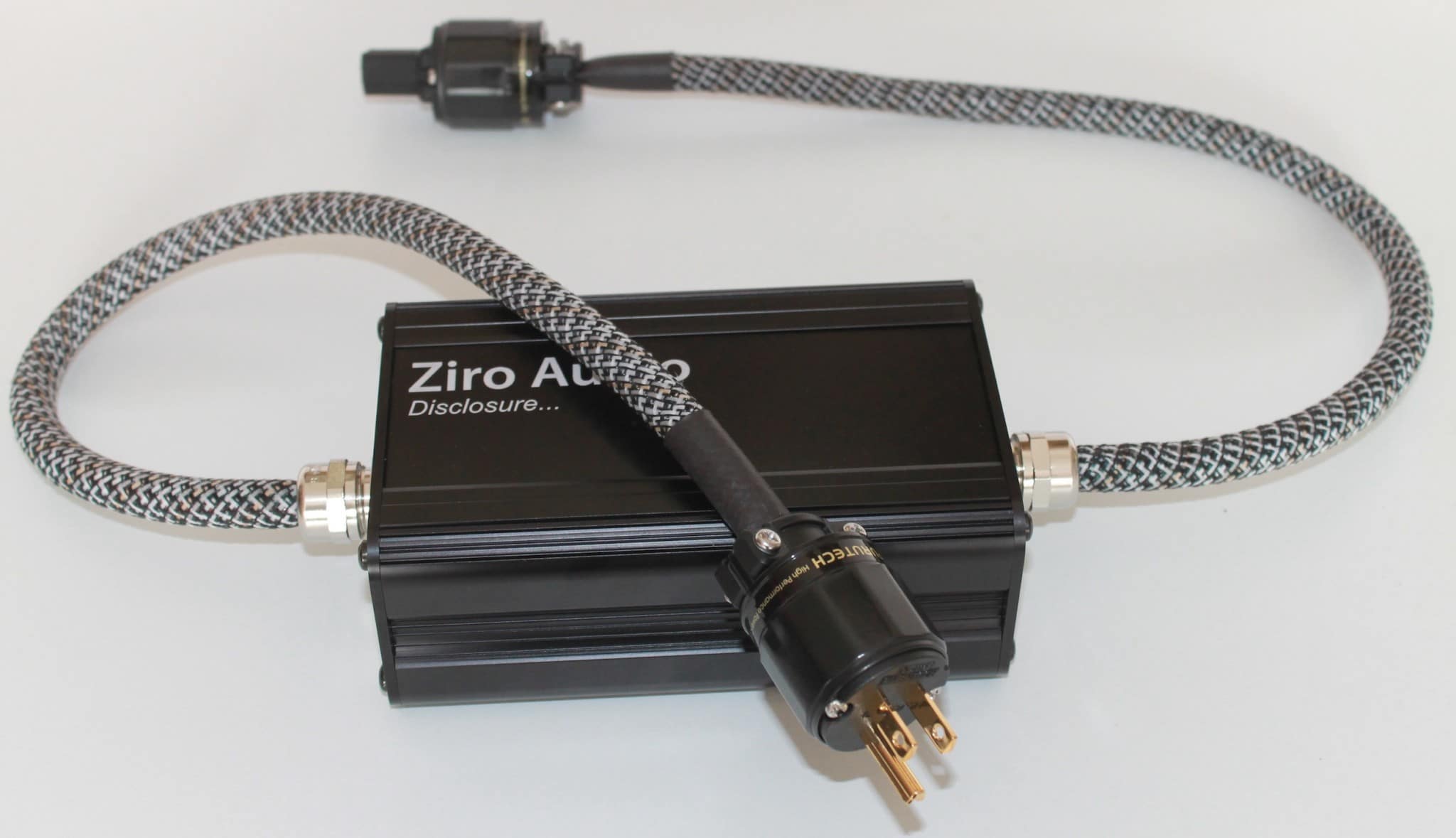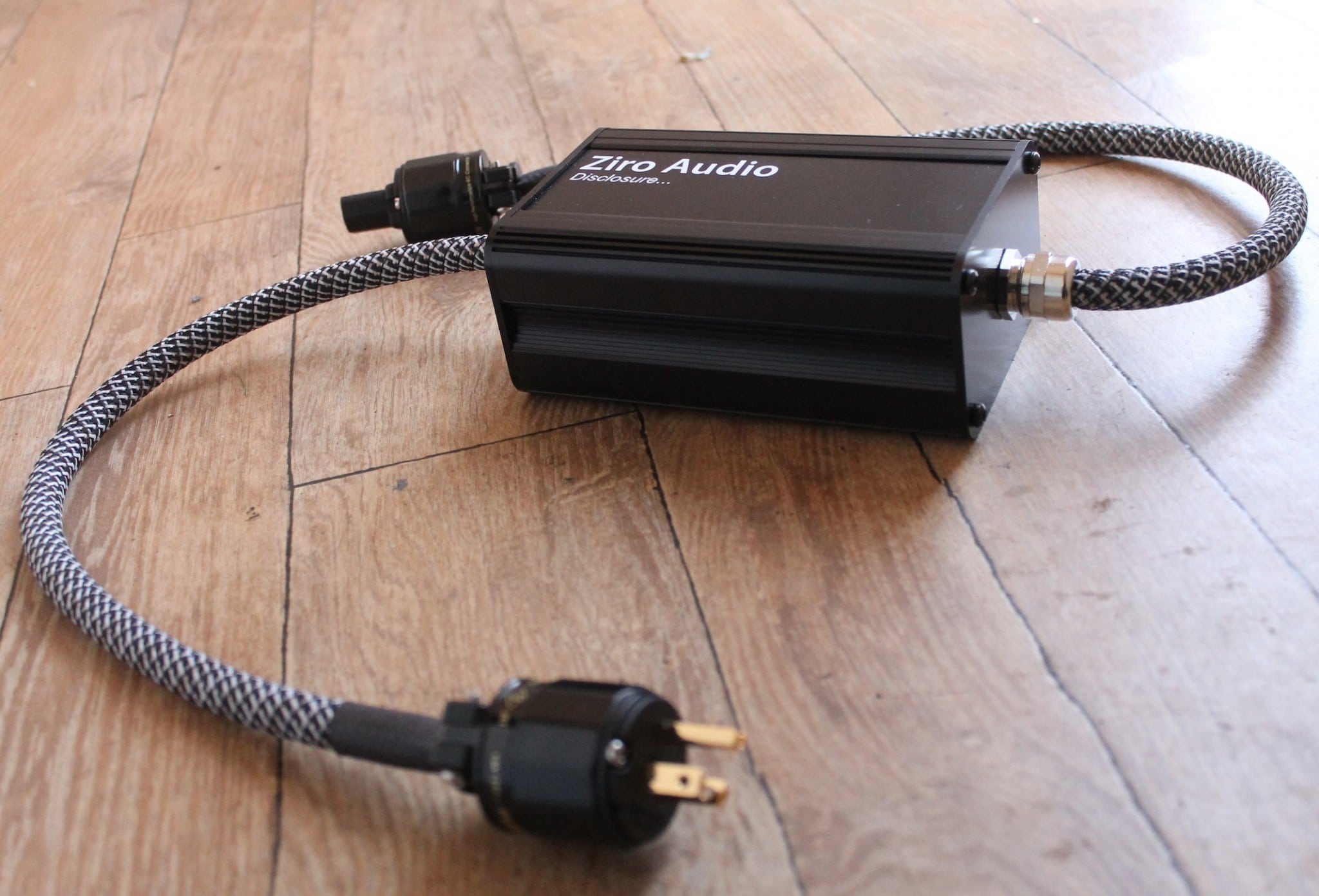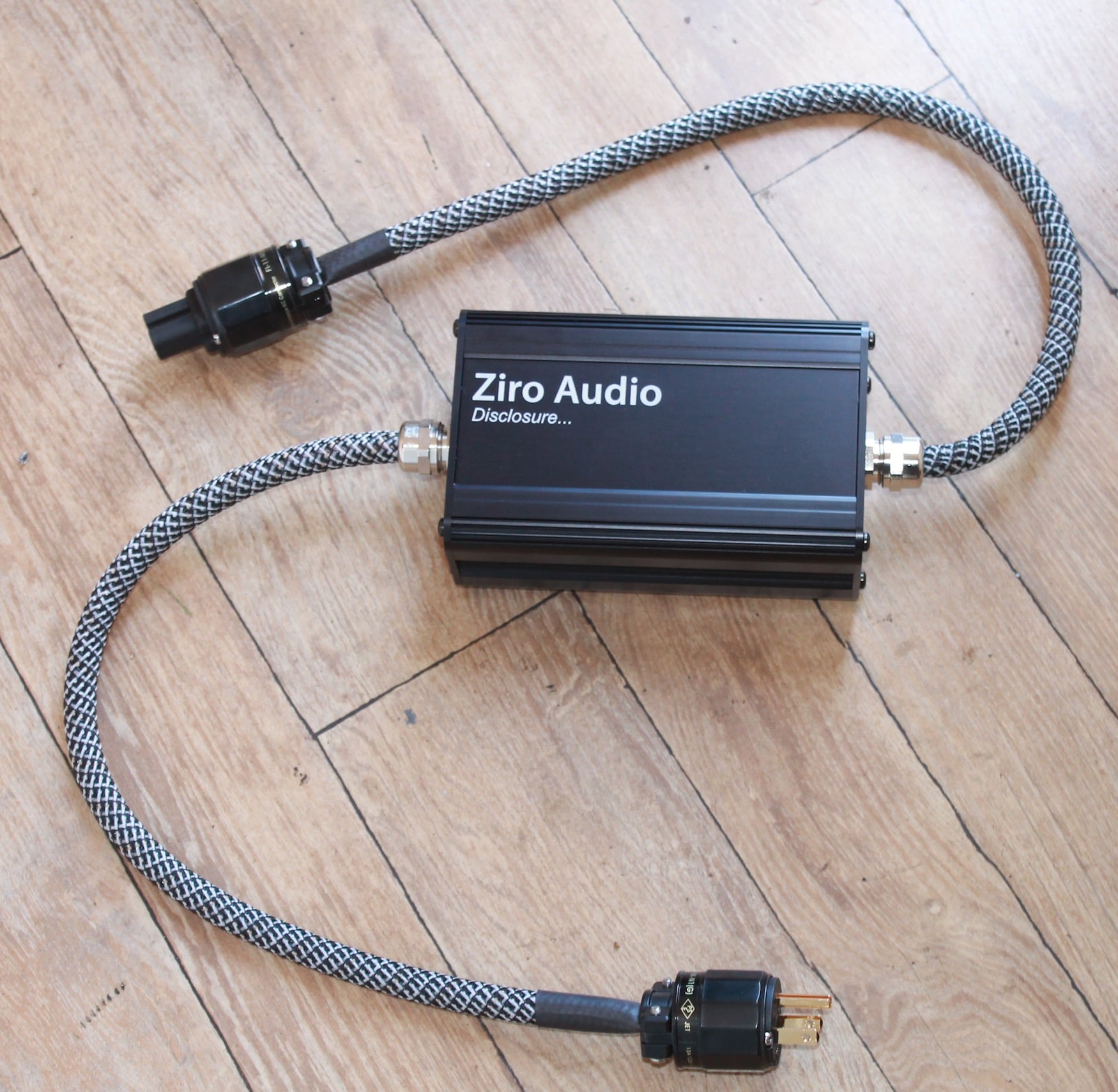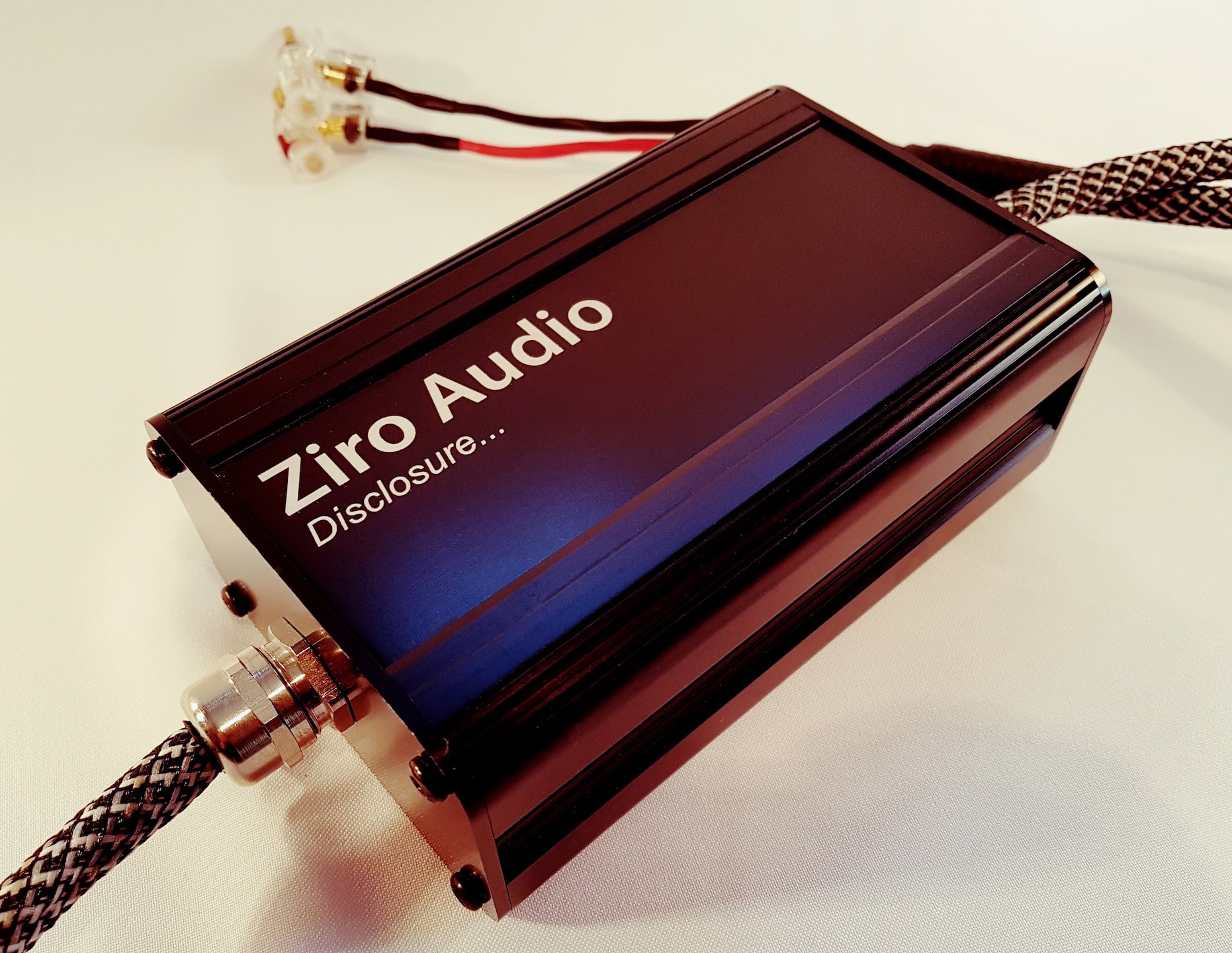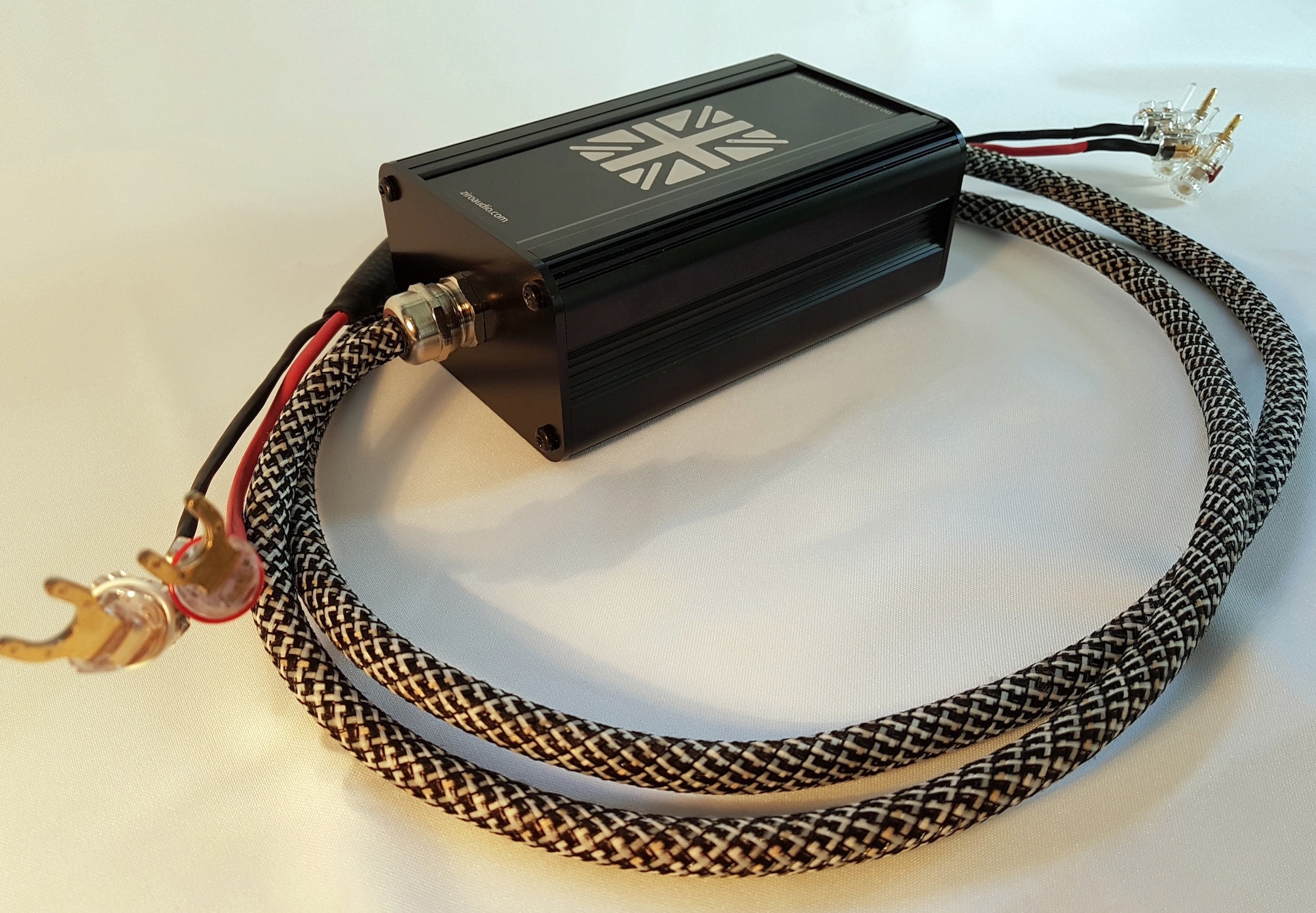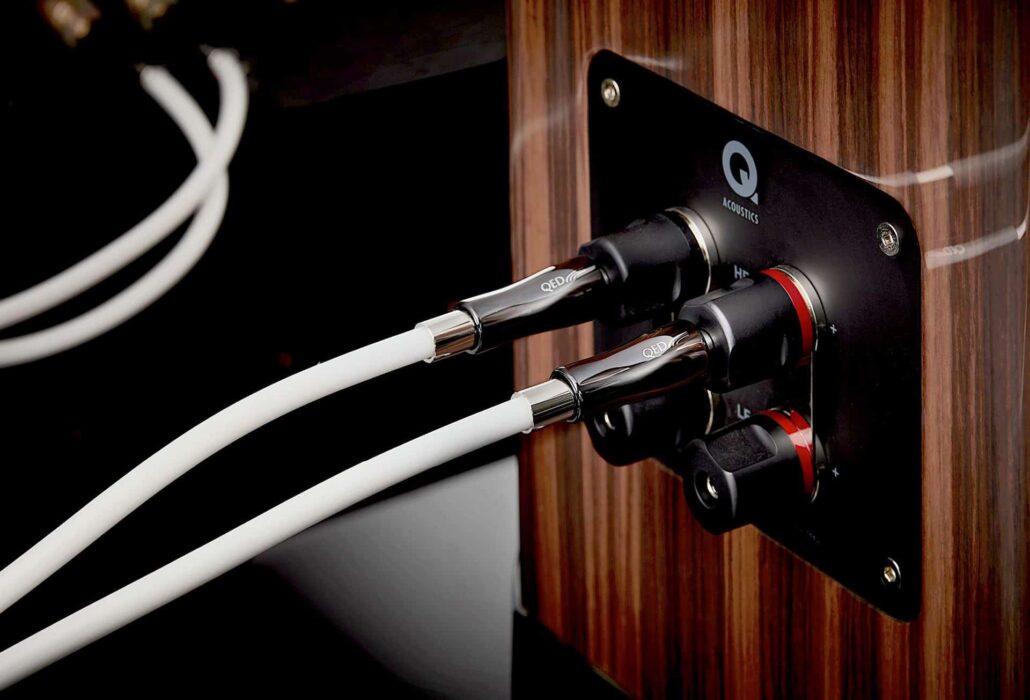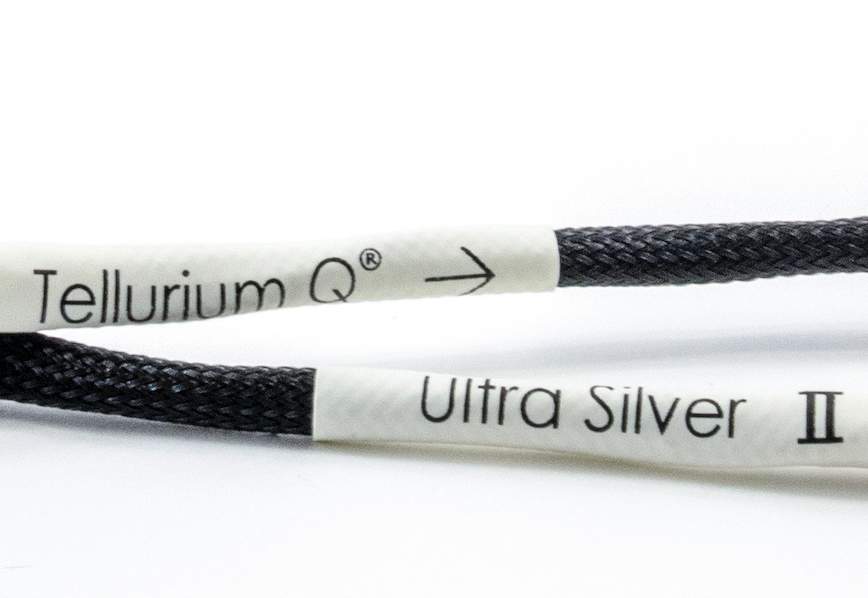The Article
Ziro Audio cables: They Want To Box Your Ears
20th July 2017
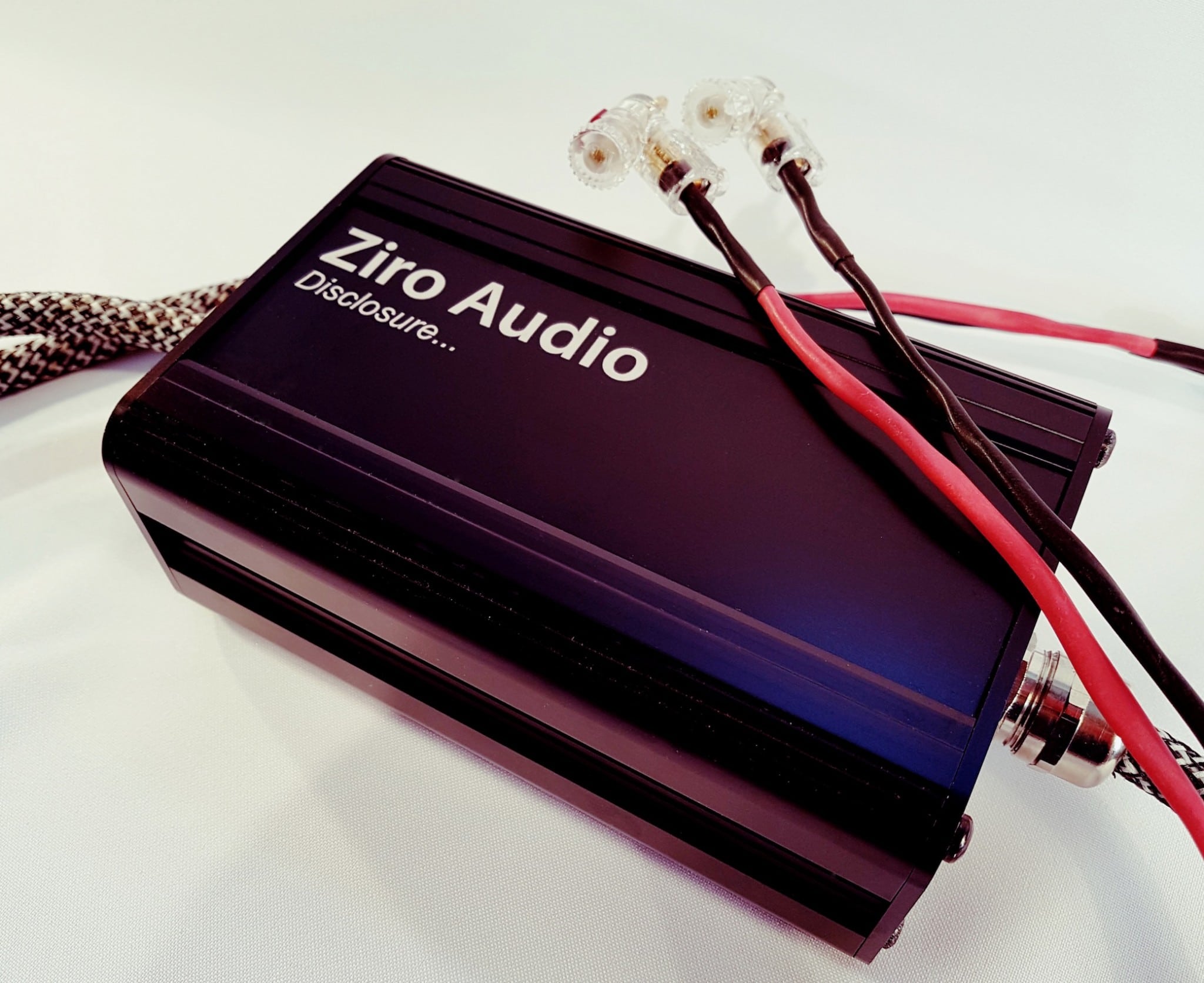
Using a passive boxed system to remove noise from the hi-fi chain, Paul Rigby reviews the Ziro Audio Disclosure power and speaker cables
Many hi-fi companies who wish to improve sound quality through cable manufacturer use top quality materials within any given budget. They utilise a combination of diverse ingredients and then build the cable in a variety of different ways to aid sound reproduction. There are a few companies out there, though, that do not rely or even want to rely on the cable itself to do all the work. Instead they focus on additional technologies that, in effect, spiggy-back the cable. Some, like Ziro, use a passive system. In Ziro’s case, this passive application is stuffed into the metal box situated within the cable itself.
The idea of the passive box is to remove all of those things that prevent a cable doing its job in the first place: noise. I use the word ‘noise’ in its broadest sense but it encapsulates 57 different varieties (or seems to, at any rate) including physical noise from your listening room and beyond, electrical noise from the mains, airborne noise including Wi-Fi and a lot more. This noise degrades sound quality because it masks sound quality. It’s not particularly noisy noise, like a siren for example, this noise is almost like a curtain that dulls detail and reduces clarity. It’s a sort of parasite, if you will, that just gets in the way.
These cables are an attempt to remove this horrible stuff.
Ziro Audio has been in business since 2012 while owner/designer, Adam Fairless, has been making audio cables for the best part of 10 years, “The breakthrough came when I studied noise floor levels in audio equipment,” he said. “My friend told me that he loved the ‘inky black moments’ when listening to music. I understand that there are many brands out there that use some kind of EMI/RFI filter and interference protection. The problem is if you take away all of the interference, you will also take away the original sound of that particular audio equipment that you bought and loved in the first place. The sound can become too damped in the lower frequencies which results in less musicality. It’s a fine line and not easy to judge at all but we think we have now cracked it.”
As for the actual construction of the cables themselves? Fairless commented that, “The material used is multi strands of pure silver, which are specially drawn for us. We then treat the cable with our ‘can’t tell anyone’ method, which results in lower capacitance and immunity to EMI interference.”
To begin the test, I looked at the power cable and decided to focus on the phono amplifier. I’m a firm believer that, in terms of noise reduction, this one point is critical. Especially for my hi-fi chain because the phono amplifier is a two box valve design. Hence, valves are inherently noisy. More than this, though, the phono amplifier is struggling to boost a tiny signal supplied to it via the turntable’s cartridge. Hence, any tiny degree of noise from the cartridge is amplified to stupid levels which threatens to ruin your musical day.
SOUND QUALITY
I began by playing the Connie Francis original pressing Sings Bacharach and David (MGM) from 1968 (a brilliant LP too, if Connie floats your Francis). The lady herself sings in front of a full orchestra. I played the music for around 10 seconds then had to stop to write this bit because there is a lot going on here…and it’s all good.
Firstly, I noticed an immediate rise in gain. This is a good sign that noise is being removed. Hi-Fi-based noise dulls frequencies. Remove them and those frequencies bring back to life. Hence, I had to lower the gain – just a touch – to return the music to the same volume. Next was the change in the shape of the soundstage. Francis herself had moved. That is, the stereo image of her voice had lifted vertically about a foot and a half to two feet. Suddenly, I was looking up to the woman. Next were the strings. There’s a bank of violins behind Francis that had not only multiplied so it seemed as if there was more of them but had expanded in nature to occupy more of the central stereo image. A introductory trumpet also sat within an airy and spacious area with a newly enlarge reverb tail, the tapped cymbals followed this pattern, giving treble a delicate and fragile nature. The bowed cellos, providing a sense of bass, offered a greater weight in the presentation while the piano positively tinkled being light and sprightly.
Actually, the best aspect of the performance from Francis was, indeed, Francis. I’ve always seen this LP as being rather compressed in nature, blaming the mastering engineer for having an off day or, indeed, being under orders from unscrupulous producers. With the Ziro cable in situ, though, this ‘compression’ actually left. Yes, Francis had a slightly strained aspect during crescendos but they no longer produced an edgy upper midrange. What was left was Francis trying to hit a note. Wonderful.
Next was a more contemporary pressing and the high energy sounds of Die Werkpiloten via Germany’s Vinyl on Demand label from 2012.
I was impressed by the clarity from the combined synth runs that, with the addition of both air and space in the soundstage, gave the music a real sense of ease and relaxation. As if to say that this music creation malarky is easy peasy. There seemed to be little or no effort from the band. Bass was full, meaty and full of character but it never dominated or bloomed. Instead, it was both rhythmic and musical, demanding a level of foot-tapping at the very least. The combination of precision and easy flow from the lower frequencies gave the music an organic fluidity that kept you wanting more.
I left the power cable in place and then fitted the two speaker cables.
The result was both subtle but also more impressive. That is, playing the Connie Francis track, Alfie, the Francis voice matured and sounded richer than before. Her diction improved but also added both clarity and texture, to the extent that the once complained of compression retreated still further, effectively making this problem a distant memory. Her voice appeared to add new reverb tails, giving a gentle sense to her voice.
The maturity of the sound extended towards the orchestra. The piano was a particular beneficiary. It is possibly the toughest instrument for any hi-fi to track and control, such are its variable and chaotic frequencies. Here, though, the Ziro speaker cables provided a strong sense of authority in its depiction of the piano. There was a real sense of command here with a combined sense of detail but also delicacy.
Noise reduction seemed to continue here as instrumental separation was enhanced. Again, this was notable between the brass section and the percussion.
I then moved to CD/DAC and one of the strangest yet best dance tracks of the 90s, The Shamen (and Terrence McKenna) with Re:Evolution. As McKenna talks in plodding spirals, The Shamen provide an uplifting and complex suite of beats. McKenna’s speech was clear and accurate in its presentation. There was no threat of smearing or blurring here. His chatter was focused and easy to follow with plenty of structure and grain. Meanwhile, the band’s electronic backing was both dynamic and offered immense impact. It’s complexity does threaten to overwhelm the soundstage but the cables kept every possibly wayward frequency in their place providing highly detailed yet supremely precise beats and electronic noodles.
CONCLUSION
A suite of very accomplished cables that are, in fact, more than cables but a partnership of cable and passive noise reduction, the Ziro system effectively reduced and/or removed a whole host of offensive noise within my hi-fi chain. This complex barrier being lowered, the sound – which is there all the time, folks – had an easier time attempting to reach my ears. The upshot? My hi-fi sounded a whole lot better. Clarity, transparency, precision with a tonal realism that was impressive indeed. Yes, these cables are expensive but they are not made for those on a tight budget. In fact, don’t see these cables as cables per se but as a component upgrade. Such is the sonic improvements they bring. I tried a single power cable and two speaker cables and heard such differences. More cables would, I suspect, only enhance the sonic improvements.
ZIRO AUDIO DISCLOSURE POWER AND SPEAKER CABLES
Prices:
Disclosure SILVER Power Cable 1.25m, £900
Disclosure Speaker Cable SILVER 3m, £2,100
Tel: 07425 148 485
Website: www.ziroaudio.com
GOOD: tonal realism, precision, clarity, mature and open midrange
BAD: possible space issues for some
RATING: 8
REFERENCE
Origin Live Sovereign turntable
Origin Live Enterprise 12” arm
Transfiguration Proteus cartridge
Leema Essentials CD player
Benchmark DAC
Icon Audio PS3 phonostage
Aesthetix Calypso pre-amp
Icon Audio MB845 Mk.II momoblock power amplifiers
Quad ESL-57 speakers [One Thing modded]
Tellurium Q & Atlas cables
Harmonic Resolution Systems Noise Reduction Components
All vinyl was cleaned using an Audio Desk’s Ultrasonic Pro Vinyl Cleaner

